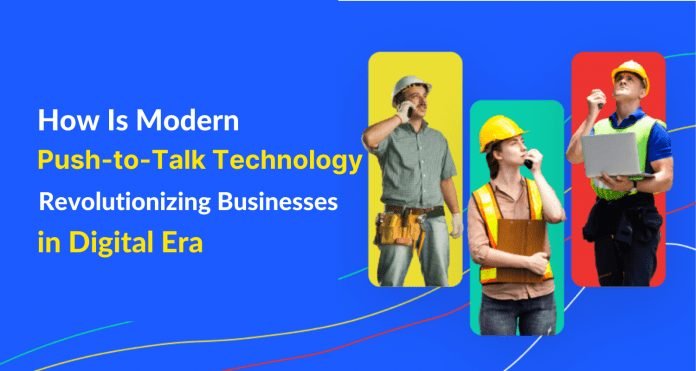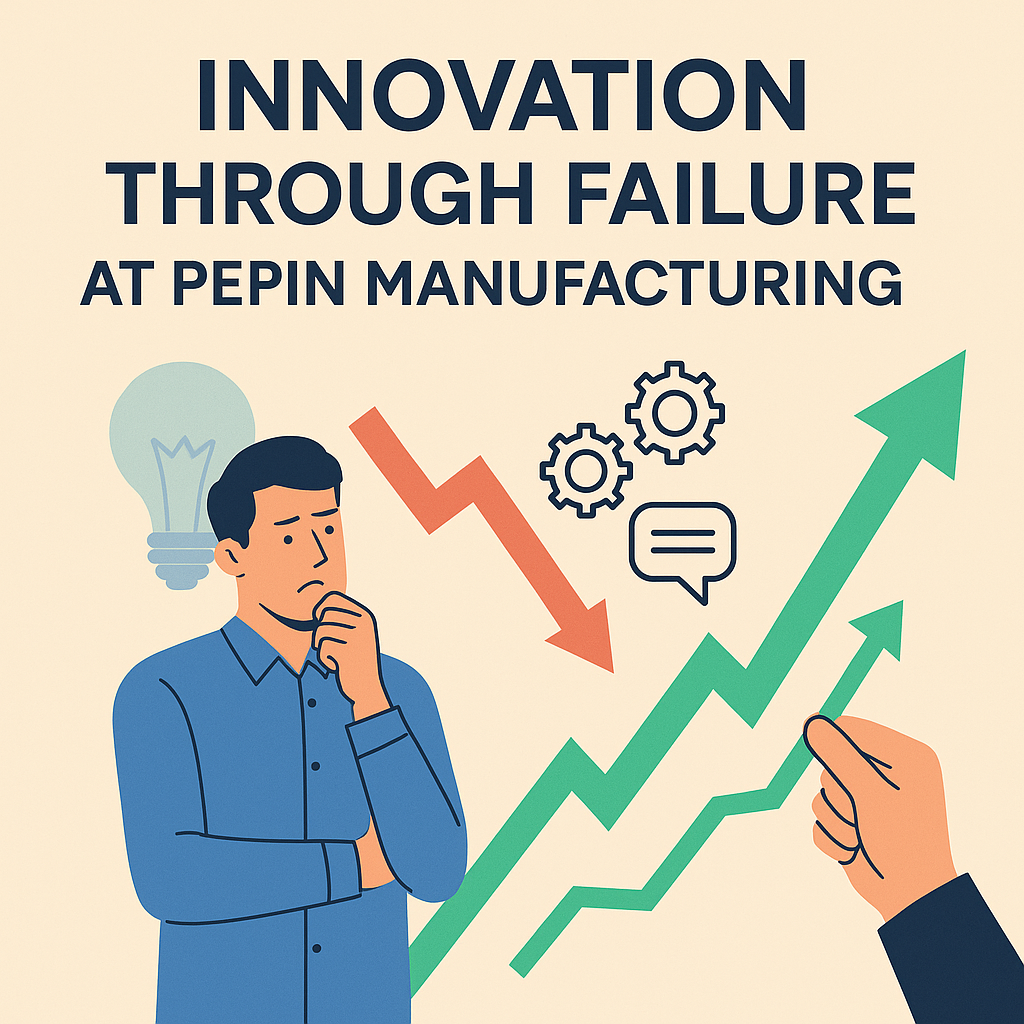Last Updated on March 23, 2024 by Aiman Emaan
With the advent of the Internet, an upgraded method of communication technology has risen in prominence among businesses. Although legacy walkie-talkies and Land Mobile Radios have come a long way, new technologies such as Push-to-talk apps have made them obsolete. Globalization due to digitalization trends, especially after the introduction of smartphones, created new and improved methods of communication. With modern technology and improved communication apps, businesses have expanded their ability to stay connected with other mobile workforce dispersed across the globe within a matter of seconds.
Increasingly, frontline workers require faster and easier communication methods while they are on the move, but traditional two-way radios and other slow and tedious modes of communication such as cellular calls, physical mails, and text messages, etc., are typically insufficient for addressing all their communications needs during mission-critical purposes or emergency crises. The new generation of Push to Talk applications makes communication easier and better. But what exactly is Push-to-talk?
Table of Contents
What is Push-to-talk technology?
The push-to-talk protocol facilitates instant communication between two or more individuals (associated within the channels as created by the administrator) while utilizing a wireless cellular service that transmits and receives voice information at the push of a button.
In spite of the fact that Push-to-talk technologies have been continuously evolving over the years to empower the end-users with a wide array of capabilities, their basic purpose for transition remains the same, which is to allow the participants to communicate instantly with another individual or a group of people.
No wonder, this advancement of technology is merely one of the numerous reasons for industries to adopt modern Push-to-Talk technology, in addition to their numerous other advantages; the following are some benefits to implementing Push To Talk technology.
- A viable option for modern businesses
Legacy walkie-talkie devices and citizen band radios have a relatively short range of frequency – approximately a couple of miles or a few hundred meters. Communication concerns for businesses using the legacy walkie-talkie devices might not pose if employees work under the same roof or nearby locations; however, if there are mobile workforces on the move wherever their job takes them, establishing communication with them via walkie-talkie devices can be a problematic concern.
Numerous organizations are expanding the numbers of their capital expenditure annually to deprecate their existing walkie-talkie technology designed for limited frequencies and are upgrading to modern walkie-talkie devices to widen the frequency strength. It will soon be a mandate to invest significantly in better Land Mobile Radio (LMR) systems to ensure the coverage of frequency to the extent wherever the mobile workforces are dispersed.
Modern push-to-talk applications integrated into smartphones mimic the emulated functionality of legacy walkie-talkie devices by leveraging cellular data, 3G/4G, and Wi-Fi. As a consequence, with the implementation of PTT technology, companies no longer would have to expand the figures of capital costs annually, an endeavor otherwise not feasible through traditional walkie-talkie devices. Thus, the reliability of PTT apps makes them a viable option for modern businesses.
- Fewer chances of misinterpretation
In a business context, workforce management relies on effective and instantaneous communication between the on-site key personnel and the on-field workforce, wherein both the transmission of information and the relaying of response are vital in order to ensure the effectiveness of the workforce.
Ambiguous communication between the on-field workforce and the on-site key personnel via tedious and slow communication methods such as cellular voice calls, text messages, physical mails, etc., may be highly detrimental during recurring task executions affiliated with a high level of time sensitivity.
In this regard, it is imperative that both parties have effective and instantaneous communication tools such as Push-to-talk apps implemented within which the mission-critical message can be delivered/exchanged clearly without any probable contingency of miscommunication; it can ensure the rapid affirmation/acknowledgment of incoming PTT message once it has been received by either party.
In addition to the aforementioned functionality, since the modern push-to-talk technology operates over cloud technology, the incoming PTT messages are stored within the channels and can be utilized under playback functionality ensuring fewer chances of misinterpretations in this regard.
Benefits to several industry use-cases
Push-to-talk technology is extremely beneficial for mobile industries that utilize and deploy on-field personnel to establish instant communication and exchange necessary business communication; however, it is important to note that such industries deprecating legacy walkie-talkie devices are able to utilize special features as per their business needs over and above the basic functionality of PTT when it comes to Push-to-talk application integration.
A plethora of industries including construction, logistics & warehouse, transportation, among others is starting to adopt push-to-talk applications, a technology expanding to a range of requirements and features such as – monitored employee locations, shift schedules with clock-in/clock-out, workflow management, unified corporate directory management, etc. with communication suite as a bonus.
A few industry examples are provided below that demonstrate how modern Push-To-Talk technology is replacing old-school radio communications to improve operational safety and performance.
- Manufacturing Industry:
The manufacturing industry relies heavily on instant communication among mobile workers dispersed on the plant site. With the introduction of PTT technology, recent advances in communication over and above the tedious methods such as cellular calls, text messages, and physical mails have improved the work environment in this industry.
However, as an alternative to cut down significant capital expenditure incurred via Land Mobile Radios and walkie-talkies, its depreciation and integration of modern PTT apps on smartphones have transitioned the communication method into a reliable, robust, and economical scale.
PTT app integrated into smartphones facilitates instant connectivity among the on-field workforces when quick or necessary information is needed to be exchanged, for instance, to warn employees of a work hazard or an emergency situation. In comparison to the cellular calls, that takes ample time to connect to the other party due to its long procedure such as searching for a contact, dialing the number, waiting for the call to be connected or routed, wait for the other party to receive the call, exchange information and expect a response, PTT is the superior choice when time is of the essence to establish instant communication with a single press of a button.
Moreover, enterprise-grade PTT solutions have the ability to facilitate a ‘group conversation’ via public or private channels, through which the end-users can exchange important information with many colleagues at once, making work together more streamlined.
Depending on the type of work done, most PTT applications available in the market are also compatible with iOS, Android, and rugged devices: these are best suited for employees working in extreme environments or remote areas where security and reliability are critical issues.
- Transportation Industry
Transportation businesses are rethinking their communication methods thanks to emerging technologies. Instant, reliable, and efficient communication protocol has largely been achieved thanks to push-to-talk technology over cellular devices, which allows transportation companies to establish instant communication among the workforces dispersed on the ground, in the air, as well as on the water wherever their job takes them.
These are some of the professionals that the businesses can establish communication with via push-to-talk technology in the transportation industry:
- Automobile drivers
- Aviation pilots
- Relay teams
- Supervisors
- Staff members
- Management
- Engineers
There is more to mention. This modern method of communication technology not only facilitates two-way communication between large groups of transportation professionals but also enables a plethora of other functions:
- Workflow management along with updates of day-to-day operational execution.
- Issuing and receiving work order receipts via media collaboration.
- Maintaining delivery records.
- Assessing productivity.
- Alerting and notifying of safety hazards.
With numerous mobile PTT solutions offering real-time GPS tracking, businesses can monitor their drivers and pilots’ fleet with ease. This can ensure the businesses that their drivers and pilots adhere to their prescribed routes and make satisfactory progress toward their destinations.
Read More: What is the Most Used Mobile Processor?
In closing lines…
Last but not least, modern PTT technologies are equipped with functionality over and above the PTT communications catering to a wide array of needs of diversified industries across the globe.
Many industries operating in hazardous working environments, such as humidity, dust, rain, snow, etc., require instantaneous communication between their employees that cannot be provided by walkie-talkies, including strong frequency strength, rapid voice transmission, multi-channel broadcasting, etc. It is impossible to exchange voice transmissions without having your hands free or in instances wherein, you are in an environment that prevents you from doing that.
Because of this, many companies are advancing operations by taking advantage of push-to-talk communications (PTT) to achieve efficiencies, agility, and speed. Examples of this are logistics fleets, construction firms, and field service teams.
The productivity, engagement, and communication suite can be integrated into the existing fleet of smart mobile phones as well as rugged devices, thus improving business returns without widening the number of capital investments for businesses.
For enterprises that have inherent communication requirements that entail instant, reliable, and secure protocols, NuovoTeam PTT is a holistic application that can be downloaded from Google Play Store or Apple App Store equipped with futuristic and emerging operational features that facilitates instant team communication, collaboration, and enhanced productivity.




























